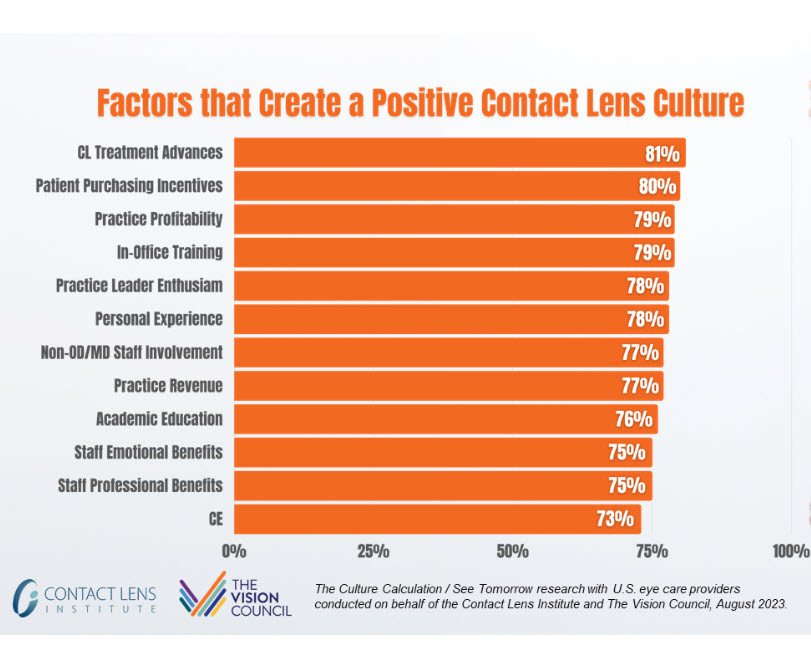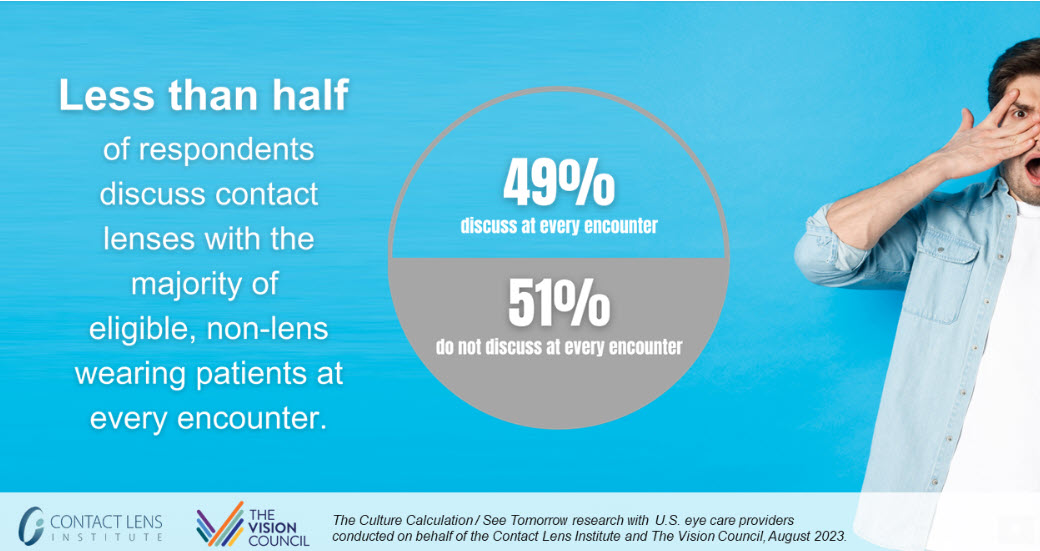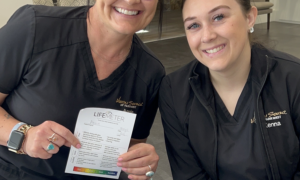
Findings on creating a culture that serves CL patients well.
Oct. 11, 2023
New research previewed during Vision Expo West reveals that creating and maintaining a positive contact-lens culture within eyecare practices takes a multifactorial approach, offering several pathways for patient and business success.
The Contact Lens Institute—in partnership with The Vision Council—presented a sneak peek of its forthcoming report, “The Culture Calculation: Data-Backed Behaviors for Contact Lens Success,” from the conference’s Innovation Stage.
The organizations jointly surveyed 173 members of the U.S. eyecare community, asking a range of questions regarding beliefs and behaviors when it comes to cultivating contact-lens enthusiasm among their colleagues and patients. Responses included perspectives from optometrists, opticians, ophthalmologists and practice administrators.
“Since 2021, our See Tomorrow initiative has uncovered valuable consumer insights for the eyecare community. The latest effort turned the lens inward, for the first time quantifying what’s involved to create, nurture and expand positive contact-lens cultures,” said Stan Rogaski, executive director of the Contact Lens Institute. “Unlocking this knowledge has the potential to inspire better patient satisfaction and practice management outcomes alike.”
Other Articles to Explore
Chief among the previewed findings is that 94 percent of respondents believe their practices already have a positive contact-lens culture. Eighty-four percent of practices encourage doctors and staff to recommend contact lenses, with the same percentage encouraging patients to consider this form of vision correction.
Those beliefs are in stark contrast to actual behaviors. The new data indicates that only 49 percent of practices discuss contact lenses with the majority of eligible, non-lens wearing patients. This validates prior See Tomorrow consumer research, in which more than two-thirds of patients did not recall contact lenses being discussed during their last two office visits. In a related survey earlier this year, 44 percent of glasses-only wearers expressed interest in contact lenses, but stated the possibility was never raised by their doctor or staff.
The research team also asked the eyecare community to rate the importance of more than 20 factors that affect a positive contact-lens culture. Product access and advancements topped the list, followed closely by elements over which a practice has more direct control, including education and training, in-office advocacy, and the emotional and professional benefits staff receive by prescribing contact lenses.
The final data set within the preview focused on the financial upsides of contact lenses. Surprisingly, only 47 percent of respondents indicated their practices quantify the business impacts of contact-lens patients compared to patients who rely on other forms of vision correction. Of those that do perform some type of assessment, 56 percent report that contact-lens patients are more profitable. This raises several questions regarding tracking and analysis methodologies, the under-utilization of strategies such as prescribing glasses to current contact lens patients, and myths that may color perspectives on the topic.
“The golden thread across our culture research findings is opportunity—opportunity to have more patient conversations, opportunity to enhance certain practice elements to motivate colleagues, and opportunity to better measure the substantial economic value of contact lenses to the eyecare community,” said Rogaski.
The expert panel at the Venetian Convention & Expo Center was moderated by Charissa Lee, OD, FAAO, a member of the Contact Lens Institute Board. Joining her were Alysse Henkel, senior director, Market Research & Analytics for The Vision Council, as well as 2023 Contact Lens Institute Visionaries Shelby Brogdon, OD, McFarland Eye Care, Little Rock; Sabrina Gaan, OD, Eyes on Plainville, Plainville, Mass.; and Lisa Hornick, OD, FAAO, Stanford Ranch Optometry, Rocklin, Calif.
The comprehensive “The Culture Calculation: Data-Backed Behaviors for Contact Lens Success” report with additional reporting categories and analysis will be published in mid-October 2023.
The Contact Lens Institute advances “the latest innovations in safe and effective contact lens and lens care products and services that provide unique benefits to patients while satisfying the evolving needs of eyecare professionals. CLI undertakes activities that properly assess, enhance, promote and balance contact lens and lens care industry welfare and growth, including the safe use of products in the marketplace.”
Its members include Alcon, Bausch + Lomb, CooperVision and Johnson & Johnson Vision. For more information, visit contactlensinstitute.org.





























